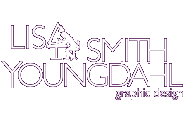Do it yourself?
A Graphic Description of What You Should Know About Preparing Print Marketing Materials
The small business owner often views the cost of advertising, graphic design and promotion as “extras”. While the need for marketing is acknowledged, many believe that they can cut corners by doing the design work themselves in Word or Publisher, using a fancy font and clip art. Or may think of themselves or someone close as “artistic,” and is capable of designing a new logo, brochure or website. This may not be a good idea. I like to use the comparison that just because you have access to Home Depot, it doesn’t make you a master carpenter. Your professional image is not a do-it-yourself kind of project. Too much rests on the finished product. But if your budget doesn’t allow you to hire an experienced professional graphic designer, here are a few guidelines to create an effective printed piece, and avoid any “surprises” at the printer.
- Don’t Go Font Crazy
Limit the amount of fonts used in a job. Too many fonts make your message difficult to read. You shouldn’t need to use more than three typestyles in a single document. Don’t use underlining for emphasis. If you use a bold or italic version of the font you’re using for your body copy, your document will have a more professional appearance.
- Don’t Use All Capital Letters in a Script Font
The reason for this should be evident, it’s illegible. The reader is not going to make the effort if he can’t read your message at first glance.
- Don’t Use an Elliptical or Polygon Text Box for Large Amounts of Text
This will force the text to be unaligned on either side. When text is not aligned on either side, it can be harder to find where the text begins again on the left side of the paragraph, and the reader will become too exhausted to read all of your text. For the same reason, don’t center large amounts of text either.
- If You Put Text in a Border, Leave Some Space
Often the novice designer will put a border around the text and leave no gap between the text and the border. Inset your text a minimum of 1/16” on all sides from the border. Also, avoid hairline rules. They may look good on your computer monitor, or when you print them on your laser or inkjet printer, but will be invisible on a high-resolution imagesetter. If you need a thin line, use a minimum of .25 pt.
- Do Not Put Two Spaces After a Period
Those of us who learned to use typewriters in high school were taught to use two spaces after a period to indicate the end of a sentence, and may continue doing that on our computers. However, digital fonts have optical spacing. If you space twice after a period, it leaves noticeable gaps in the text.
.
- All Fonts and Graphics Must Be Included When Giving a File to a Printer!
Even the most common fonts such as Arial and Times should be included with your file. If your printer does not have the font that you used, your job may print in an oddly spaced different font, such as Courier. Don’t forget to include those fonts that may be used in your graphics.Also, be sure to include all images and graphics with your print files. Without the original files, your images may print in low resolution. The graphics should be eps, tiff or pdf format. Your software may let you place other formats, but they will not reproduce well.
If you can export your file as a pdf, the fonts and graphics will be embedded. Make sure to ask the printer what type of file is preferred.
- Use the Proper Color Format and Resolution for Images
Color images must be CMYK (cyan, magenta, yellow & black) for four-color printing with a resolution of 300 pixels per inch when used at actual size. Do not enlarge scanned images in a page layout program — doing so will degrade the quality of your images. A low-resolution image will have a pixilated appearance. An image copied from a website does not have an adequate resolution for printing, and has an RGB color mode.If you specify a Pantone color in your document, this will create an additional printing plate. Pantone colors are usually used for 1 or 2 color printing, not with four color except in special circumstances. Four color or process printing refers to full-color reproduction, such as the cover of a magazine.
Does all of this seem confusing to you? There are many other considerations in creating a good design, and making sure you are meeting all the technical requirements. Work with your printer to achieve the best results, or better yet, hire a professional designer.
For more marketing and design advice, subscribe to Creative Remedies.
